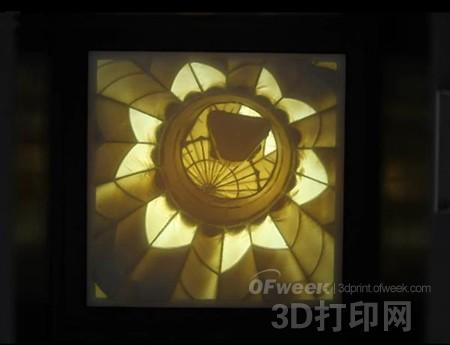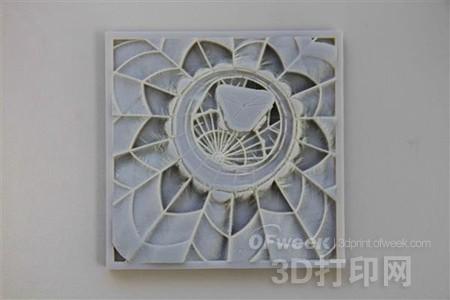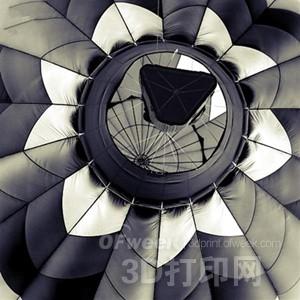3D printing light embossing presents a different artistic effect
Justin Jensen is a Ph.D. student in computer science at Brigham Young University (BYU) and has been studying computer graphics and animation for many years. Recently, he invented a method to print interesting light-relief reliefs in 3D digital photos. This light-transparent relief reproduces the original image with a high level of fidelity when there is light behind it.

The so-called light-transmitting relief, that is, printing a stereoscopic image on a translucent plate, and then presenting the image through the backlight. The thinner the area, the more light it passes through, and the thicker areas appear darker. The history of light-transparent embossing dates back to the 19th century. The traditional method of making is to engrave on wax, then make a plaster mold, cast it, and burn it into a porcelain. Translucent relief requires very fine detailing, and is more suitable for high-precision SLA (light curing) 3D printing. The plastic extrusion (FDM) printer has a thicker single layer, which will weaken the rendering effect.

Jensen developed this 3D printed translucent embossing technique in BYU's advanced human-computer interaction course. The course consists of three main parts: the basic theory of rapid prototyping and human-computer interaction. The final part of the course also includes how to use a laser cutter and a 3D printer to complete the human-computer interaction project.
In order to create his own 3D printed embossed relief, Jensen first converted the color image into a grayscale image. He then created a Cartesian coordinate system of the triangular mesh, with each pixel of the source image representing the vertices of a 3-triangle mesh. In order to determine the 3D printing thickness of different regions to achieve the corresponding transmittance, he sets the Z coordinate of each vertex to the inverse of the brightness of the pixel. That is, the brighter pixel has a smaller Z value, and accordingly the printed thickness is smaller and more transparent, and vice versa.

Then, when the 3D design file of the light-transparent relief is completed, Jensen imports it into the Blender software and prepares for 3D printing. He used the Objet30 Pro 3D printer and VeroGray materials in the school's lab. "If you want to faithfully reproduce the original image, the accuracy of (SLA 3D printer) is necessary," Jensen said. “We also have an FDM printer (Dimension Elite) in our lab. I decided not to use it because of the limitations of the process and the lack of light transmission of the material. Because I need to show a minimum of 0.2 mm. The details," he added, but for photos with high contrast and detailed size, the FDM 3D printer is still adequate.
Most of the photos Jensen chose as a light-transparent embossed material have a natural theme, including deserts, wildflowers and an internal view of a hot air balloon. These works show a very real and subtle effect when exposed to light.
- Bluetooth wireless
- Built-in speaker
- Built-in microphone
- Handsfree speakerphone
- Supports profile A2DP (Advanced Audio Distribution Profile)
- Aux in (3.5mm audio input)
- Micro-USB port for battery recharge
- Wireless range: 10 meter
- Controls: volume up, volume down, play/pause, pairing/answer phone
- On/off switch
- LED pairing indicator
- DC battery power: built-in rechargeable battery
- Battery life: ~5 hours at 100% volume
- Dimensions:Diameter 115mm*Height 145mm
- Includes: Micro-USB cable, Aux plug,
Bluetooth Speaker,Portable Bluetooth Speaker,Mini Bluetooth Speaker,bluetooth Wireless Speaker,portable wireless speaker
Shenzhen Lanejoy Technology Co.,LTD , https://www.szbrassnuts.com